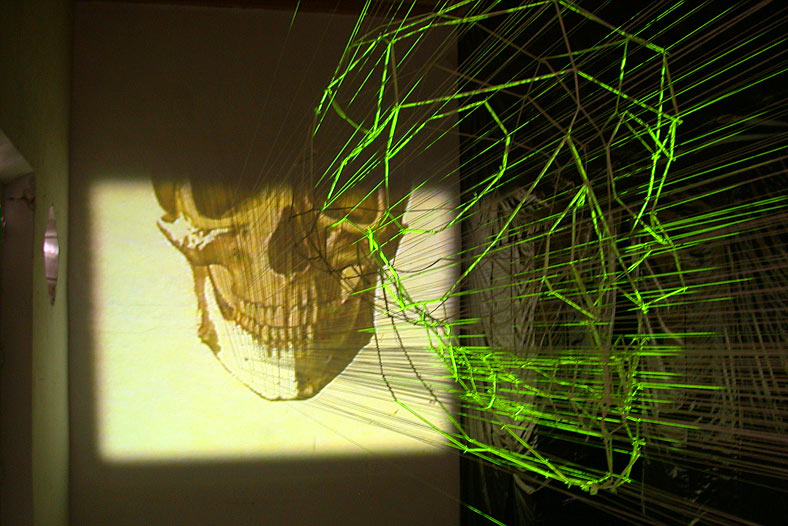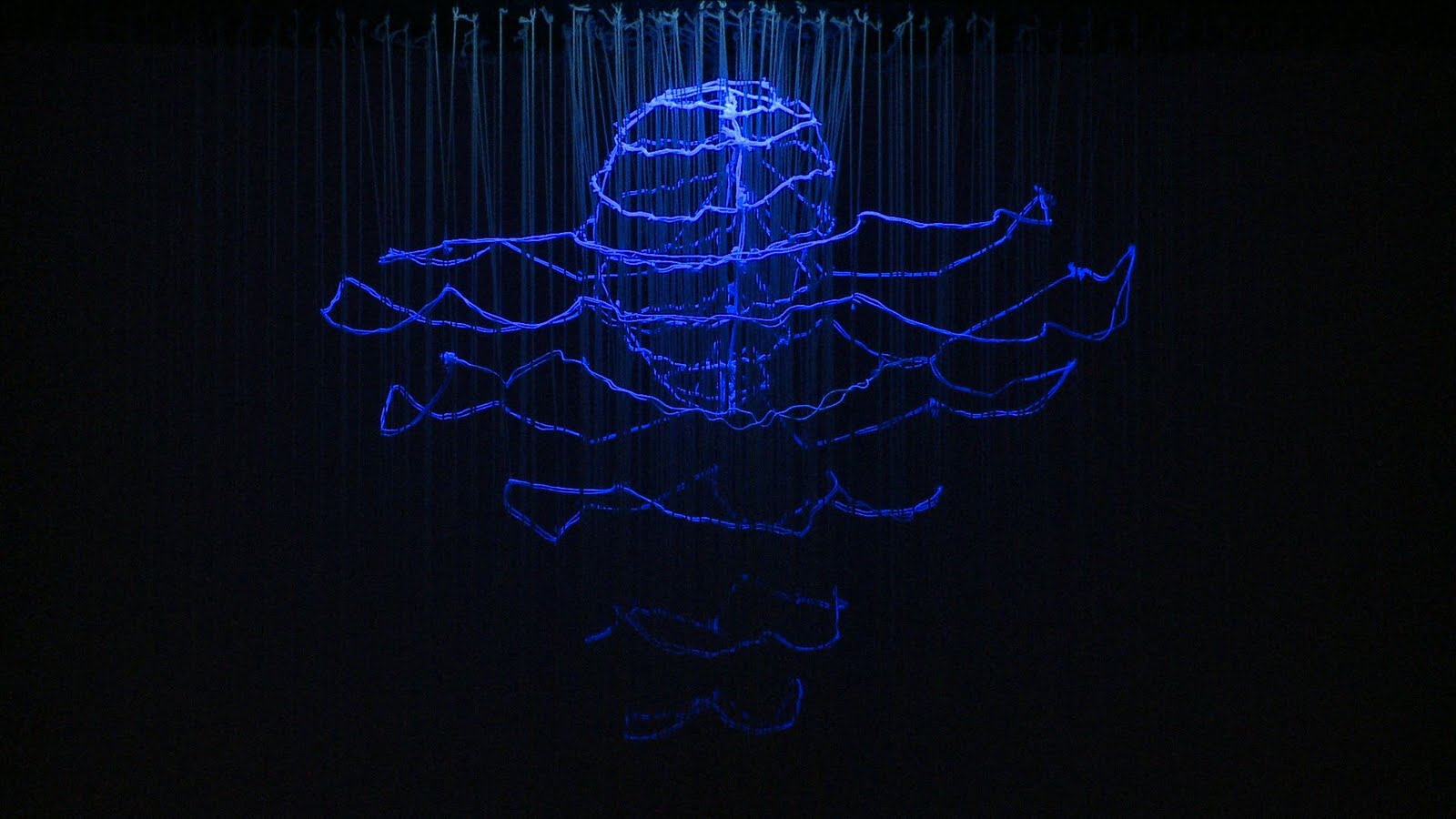Duvier del Dago Fernandez has participated in two Havana Biennial art exhibitions, the first (in 2000) while he was still in university. His work typically examines the unattainable with unblinking precision. His 2007 “Plastic Girl” show in Madrid focussed on Barbie (the unattainable woman).
In “The Strange Case of the Ideal Onlooker” (2006), a wire-frame hologram seems to be a placeholder for a real person, perhaps a historical figure, perhaps the artist himself. His “Bungalow Project” for the 2006 Havana Biennal touched on the dream of living in the ideal home. In “Castles in the Air” (2004), cameras and mobile phones hover just out of reach.
b. 1976 Zulueta, Villa Clara
During his formative years at the Graduate Institute of Art (ISA), Duvier del Dago established himself as a draughtsman. His work in this medium, and in video, came to be decisive in the inception of the projects done with Omar Moreno as the artistic team Omarito & Duvier (1987-2001). This collaborative effort reflected the creative sensibilities of Galería DUPP (Desde Una Pragmática Pedagógica/From a Pragmatic Pedagogy), an unorthodox art education project headed by artist and teacher René Francisco Rodríguez.
Duvier del Dago’s artistic discourse tells stories about current topics. They include diverse vignettes about desires, obsessions, and dreams, as well as inquiries into the human condition, the meaning of existence, and the relationship between human beings and their sociopolitical, cultural, and media environments. This is reflected in—among other works—the series Castillos en el aire(Castles in the Air), Teoría y práctica (Theory and Practice), and Secreto de estado (State Secret).
The images drawn by Duvier del Dago in his pieces transgress the limits of paper and acquire volume in space. Each of his drawings has a body woven in threads, permitting the enjoyment of an ambiguous, diffuse corporality in his “sculptures”—video installations or ephemeral sculptures—accompanied by the interplay of video and lights. His work demolishes orthodox ideas about drawing with an artistic expression that abandons its two-dimensional media and achieves full three-dimensionality.
After many minute calculations made on graph paper, and multiple sketches, the artist finally weaves his piece in situ at the exhibition site. The threads are tightened and knotted together according to the original concept, until the body of the image appears, suspended in mid-air. These woven configurations have become his signature; emerging in 2004, they began receiving wide recognition after the public and critical success of his video installation Holograma (
The mise-en-scène of his newer works replicates the appearance of 3D, and space becomes a conceptual dimension in which ideas become corporeal and tangible. Each ensemble (consisting of woven drawing, lights, and video) neutralizes previous gestures with its pellucid rationality, introducing new figures defined by their symbolic power. Among them are cars; fashionable women; figures that represent the viewer, or the man on the street, or perhaps even members of the artist’s family; strands of DNA; a yacht; a balcony. They are elements that serve the artist in his suggestive reconstruction of events, by which he “subverts historic memory using the fields of his psychological, familial and everyday memories” (Daris Vázquez, “La historia es de quien la cuenta” (History Belongs to the Teller), in the catalogue Duvier del Dago, Obra reciente 2007- 2008).
In Holiday (2010), Duvier del Dago appropriates and re-creates Worker and Kolkhoz Woman, a monument conceived by Soviet sculptor Vera Mukhina for the Soviet pavilion in the 1937 World’s Fair in Paris, the exposition in which Picasso exhibited hisGuernica. For Cubans, the sculpted duo—an icon of the Socialist Realist style created under Stalin—was irrevocably identified with Soviet ideological propaganda. For four decades, it was incessantly projected on Cuban movie screens as the logo for all films produced by the Mosfilm studio. Hence the duo’s resonance in the island’s collective imagination.
Duvier drew his inspiration from a real event: in 2003, the original sculpture was removed from its iconic place in Moscow for a restoration that lasted until 2009. In a humorous vein, the Cuban artist conceived a likely fiction: the sculpture had moved to Cuba, a communist sanctuary in the Caribbean.
Unlike the massive original sculpture, in which the two characters move forward, impelled towards a promised future, in Duvier’s work the illuminated figures, set in the midst of a dark room, seem to move in opposite directions, confronting, as part of the artist’s game, their ironic, imaginary voyage to Havana as told in the accompanying cartoon.
Duvier del Dago takes a symbol of political power and makes it travel in parody through landmarks of the Cuban capital. Holiday is a satirical approach to the subject of the Soviet presence in Cuba and its traces in Cuban culture and collective consciousness. Like other contemporary Cuban artists drawn to this topic, Duvier joins the trend of critically re-examining Socialist Realism, which had never succeeded in taking root on the island.














